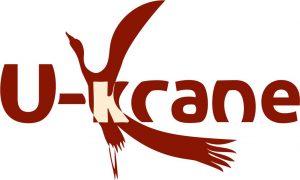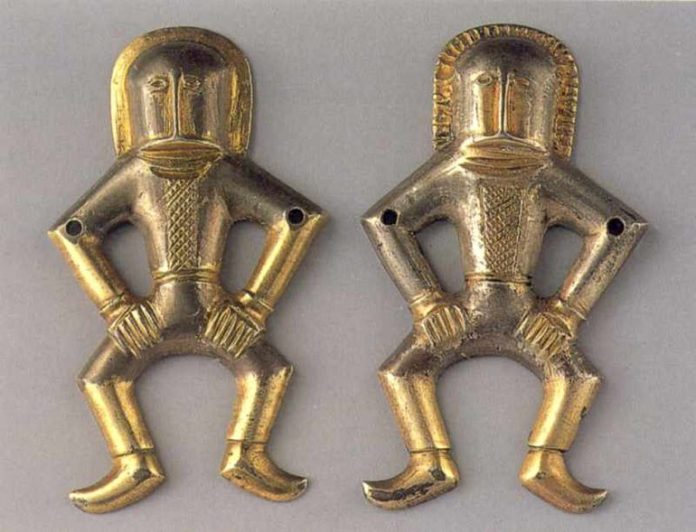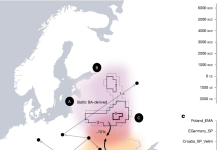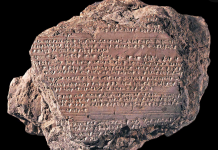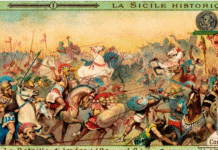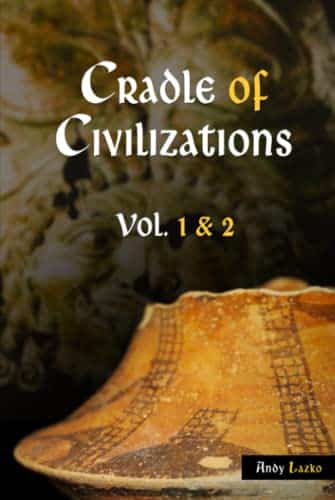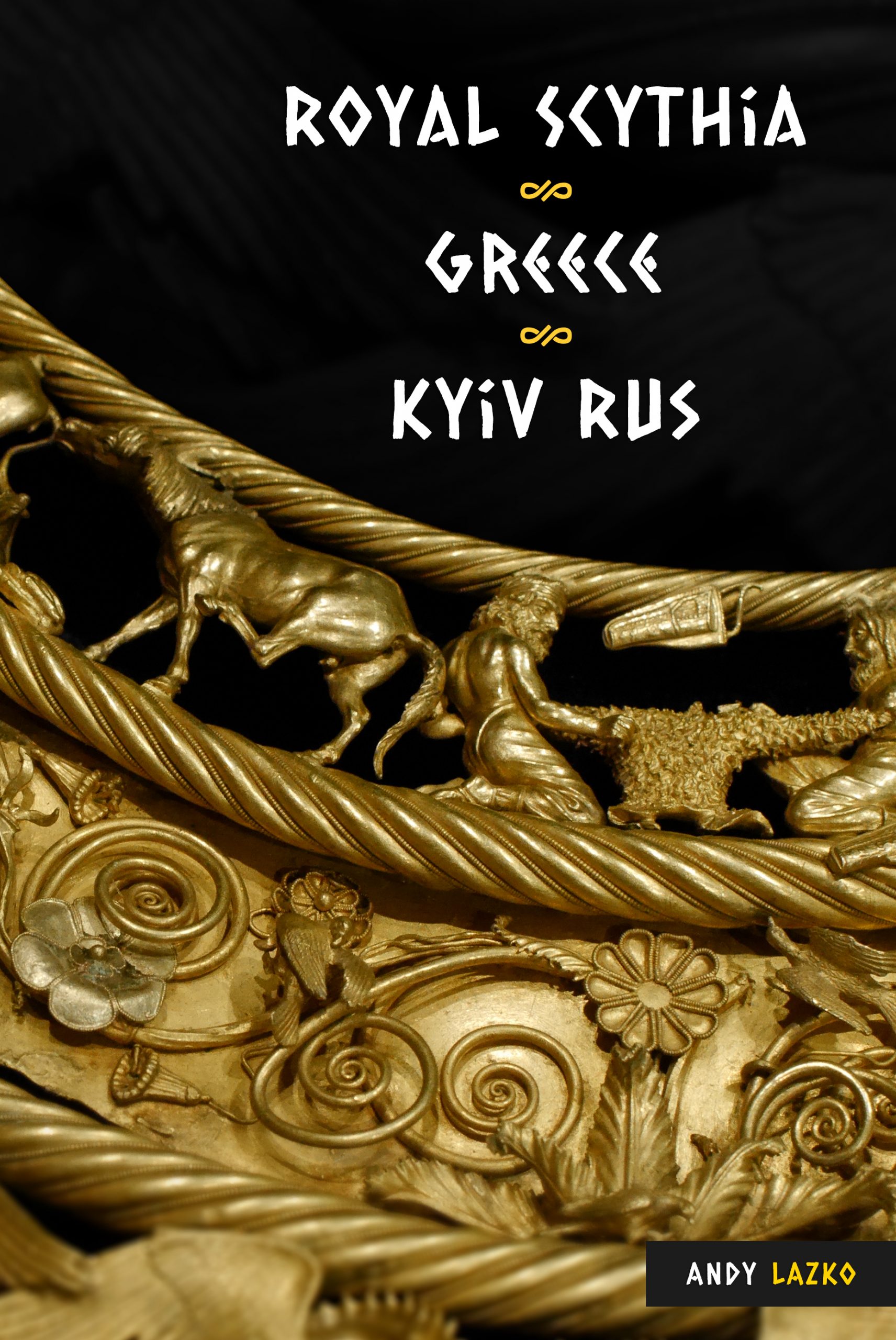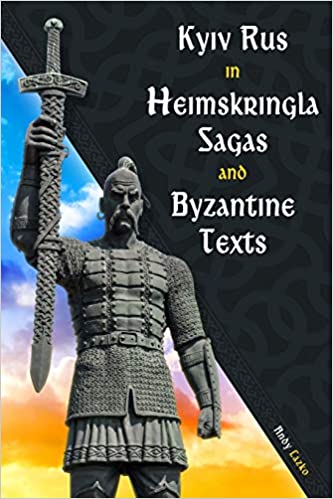Martynivka Treasure is a hoard consisting of 116 silver items (weighing about 3.3 kg) found in 1909, in the village of Martynivka, Cherkasy Oblast, Ukraine. The treasure is currently preserved at the National Historical Museum of Ukraine in Kyiv and the British Museum in London. It is dated approximately to the 6th-7th centuries AD.
The hoard includes four anthropomorphic silver figurines of ‘dancing men’ (Ukrainian newspapers sometimes refer to them as ‘aliens’ for their unusual appearance), five animal figurines, three fibulas, a radiate-head brooch, six armlets, tiaras, earrings, neck rings, buckles, belt-fittings, and horse harnesses.
A real sensation and a source of lively discussions were four anthropomorphic figurines discovered in the Martynov treasure. Their height reaches 7.8cm, and their heads, hands and clothing details are covered with gilding. These mysterious artifacts were called “Martyniv dancers” and “Martyniv astronauts.”
The figures depict four men dressed in long-sleeved shirts and trousers. Their dynamic poses resemble the Ukrainian hopak dance: legs bent and palms placed on hips. The symmetrical image emphasizes the generalized image of the dancer. The men’s heads are covered with what appears to be helmets or masks of some unique design.
An ornament is engraved on the chest, which probably symbolizes a shirt. Some scholars argue that it can be ‘linen body armor’ known as linothorax with chain mail in the middle.
Holes in the elbows indicate that the figures could be attached to a base or used as decorations on clothing. The unusual shape of the head and square helmets on the figures from the Martyniv treasure prompted some contemporaries to speak of “cosmonauts” or “aliens” from space.
However, today it can be confidently said that the costume and appearance of the “Martynivka men” are typical of representatives of the Scythian-Sarmatian ethnic group, such as the Roksolani.
Can Roksolani have anything to do with the name ‘Rus’? “Gardariki, Ukraine” ebook has a closer look at the question.
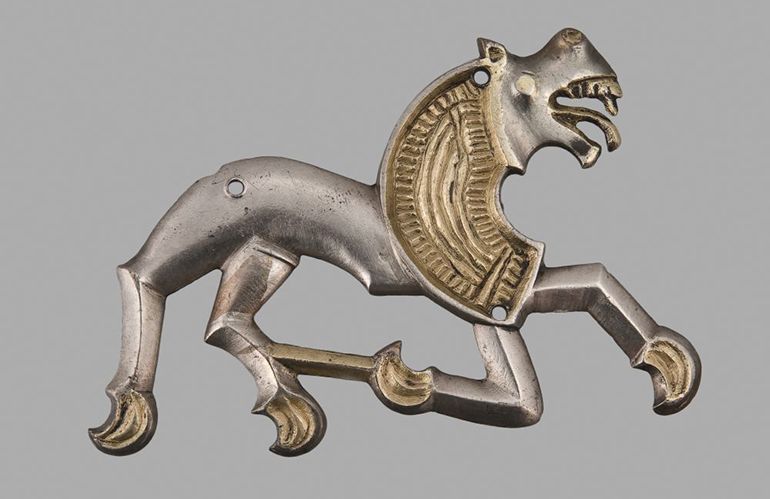
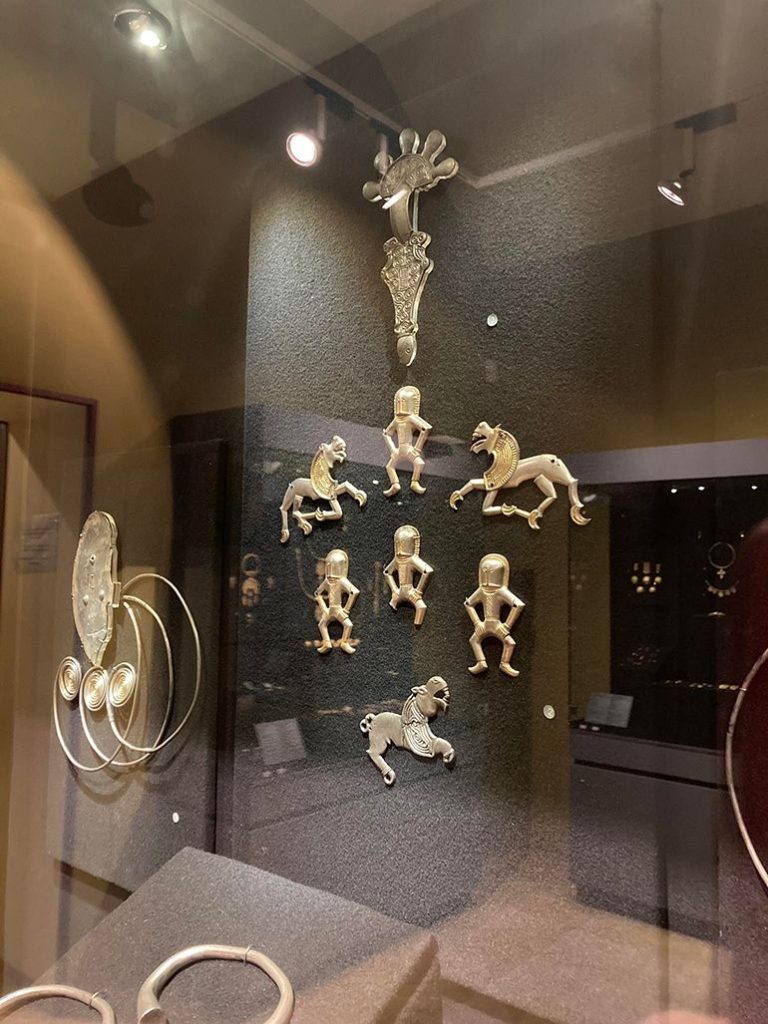
Martyniv Treasure at Kyiv Museum
